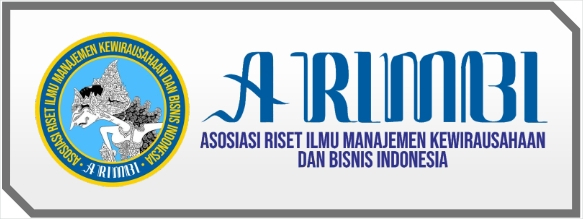Pengaruh Customer Engagement terhadap Online Purchase Intention dengan Customer Operant Resources Sebagai Variabel Intervening pada Layanan Platinum Mahasiswa di Vidio.com
DOI:
https://doi.org/10.30588/jmp.v14i1.2088Keywords:
Customer Engagement, Customer Operant Resources, Online Purchase IntentionAbstract
This study aims to analyze the impact of Customer Engagement on Customer Operant Resources and Online Purchase Intention among Vidio.com users who are university students in Indonesia. The research sample comprises 280 respondents aged 18-23 years who have accessed free content on Vidio.com in the past six months. Data were collected through adapted questionnaires, and their validity and reliability were tested. The analysis results show that Customer Engagement has a significant effect on Customer Operant Resources, indicating that customer engagement positively influences operant resources. Additionally, Customer Engagement also significantly affects Online Purchase Intention, indicating that customer engagement increases online purchase intention. However, the interaction between Customer Operant Resources and Customer Engagement does not have a significant effect on Online Purchase Intention. This study contributes theoretically by enriching the literature on the role of Customer Engagement and Customer Operant Resources in the context of subscription to Vidio.com. Practical implications for Vidio.com management include strategies to increase engagement through attractive and interactive content to boost users' purchase intentions. Suggestions for future researchers include expanding the sample size and examining additional variables that might affect online purchase intentions. This study also provides insights for fellow users on the importance of active engagement on the platform to achieve a better experience.
References
Alves, H., Ferreira, & Fernandes. (2016). Customer’s operant resources effects on co-creation activities. Journal of Innovation & Knowledge.
Anker, T. B., Moutinho, L., Sparks, L., & Grönroos, C. (2015). Consumer dominant value creation: A theoretical response to the recent call for a consumer dominant logic for marketing. European Journal of Marketing, 49(3), 532–560.
Arnould, E., Malshe, A., & Price, L. L. (2006). Toward a cultural resource-based theory of the customer. M. E. Shape.
Bowden, J. L.-H. (2009). The Process of Customer Engagement: A Conceptual Framework. The Journal of Marketing Theory and Practice, 17(1), 63–74.
Brodie, R. J., Hollebek, L., Juric, B., & Ilic, A. (2011). Customer Engagement: Conceptual Domain, Fundamental Propositions and Implications For Research. Journal of Service Research, 14(3), 252–271.
Brodie, Roderick J., Ilic, A., Juric, B., & Hollebee, L. D. (2013). Consumer Engagement in a Virtual Brand Community: An Exploratory Analysis. Journal of Business Research, 66(1).
Calder, B. J., Schaedel, U., & Malthouse, E. C. (2009). An Experimental Study of the Relationship between Online Engagement and Advertising Effectiveness. Journal of Interactive Marketing, 23(4), 321–331.
Chen, Y. H., Hsu, I. C., & Lin, C. C. (2010). Website attributes that increase consumer purchase intention: A conjoint analysis. Journal of Business Research, 63(9–10).
Chiu, C.-M., Hsu, M.-H., & Lai, H. (2012). Re-examining the influence of trust on online repeat purchase intention: The moderating role of habit and its antecedents. Decision Support Systems, 53(4), 835–845.
Cook, S. (2011). Customer Care Excelent : How to Create an Effective Customer Focus. Kogan Page.
Dihni, V. A. (2022). Isi Waktu Senggang, Ini Kegiatan yang Disukai Orang Indonesia. Daataboks. https://databoks.katadata.co.id/datapublish/2022/08/30/isi-waktu-senggang-ini-kegiatan-yang-disukai-orang-indonesia
Doorn, J. van, Mittal, V., Lemon, K. N., & Nass, S. (2010). Customer Engagement Behavior: Theoretical Foundations and Research Directions. Journal of Service Research, 13(3), 253–266.
Edvardsson, B., Tronvoll, B., & Gruber, T. (2011). Expanding understanding of service exchange and value co-creation: a social construction approach. Journal of the Academy of Marketing Science, 39(1), 327–339.
Evans, D. (2008). Social Media Marketing. Wiley Publishing.
Fishbein, M., & Ajzen, I. (2011). Predicting and Changing Behavior: The Reasoned Action Approach. Taylor & Francis Group LLC.
Frempong, J., Chai, J., Ampaw, E. M., Amofah, D. O., & Ansong, K. W. (2020). The relationship among customer operant resources, online value cocreation and electronic-word-of-mouth in solid waste management marketing. Journal of Cleaner Production.
Fullwood, C., Quinn, S. K., & Redding, C. (2017). My virtual friend: A qualitative analysis of the attitudes and experiences of Smartphone users: Implications for Smartphone attachment. Computers in Human Behavior, 75, 347–355.
Gomez-Uribe, C. A., & Hunt, N. (2015). The Netflix Recommender System: Algorithms, Business Value, and Innovation. ACM Transactions on Management Information Systems (TMIS), 6(4).
Grönroos, C. (2008). Service logic revisited: who creates value? And who co‐creates? European Business Review, 20(4), 298–314.
Grönroos, C., & Voima, P. (2013). Critical Service Logic: Making Sense of Value Creation and Co-Creation. Journal of the Academy of Marketing Science, 41(2), 133–150.
Gummerus, J., Liljander, V., Wema, E., & Pihlström, M. (2012). Customer engagement in a Facebook brand community. Management Research Review, 35(9), 857–877.
Hair, J. F., Ringle, C. M., Sarstedt, M., & Hult, G. T. M. (2017). A Primer on Partial Least Squares Structural Equation Modeling (PLS-SEM). SAGE Publications.
Hardani, D. (2020). Metode Penelitian Kualitatif & Kuantitatif. CV. Pustaka Ilmu Grup.
Harrigan, P., Evers, U., Miles, M. P., & Daly, T. (2018). Customer engagement and the relationship between involvement, engagement, self-brand connection and brand usage intent. Journal of Business Research, 88(1), 388–396.
Hau, L. N. (2018). The role of customer operant resources in health care value creation. Service Business, 13, 457–478.
Hikmah, A., & Riptiono, S. (2020). Pengaruh Customer Engagement dan E-Service Quality Terhadap Online Repurchase Intention dengan Customer Satisfaction Sebagai Variabel Intervening pada Marketplace Shopee. Jurnal Ilmiah Mahasiswa Manajemen, Bisnis, & Akuntansi, 20(1).
Hollebeek, L. D. (2011). Demystifying Customer Brand Engagement: Exploring the Loyalty Nexus. Journal of Marketing Management, 27(7), 785–807.
Hollebeek, L. D., Brodie, R. J., & Glynn, M. (2014). Consumer Brand Engagement in Social Media: Conceptualization, Scale Development and Validation. Journal of Interactive Marketing, 28(2).
Jaakkola, E., & Alexander, M. (2014). The Role of Customer Engagement Behavior in Value Co-creation. A Service System Perspective. Journal of Service Research, 17(13), 247–261.
Kumar, V., & Pansari, A. (2016). Competitive Advantage through Engagement. Journal of Marketing Research, 53(1), 497–514.
Liputan6. (2022, October 14). Vidio Kantongi Pengguna Aktif Terbanyak di Indonesia, Kalahkan Netflux dan Disney+. Liputan6.Com. https://www.liputan6.com/tekno/read/5097089/vidio-kantongi-pengguna-aktif-terbanyak-di-indonesia-kalahkan-netflix-dan-disney?page=3
Liu, H. (2021). Perceived Value Dimension, Product Involvement and Purchase Intention for Intangible Cultural Heritage Souvenir. Journal of Industrial and Business Management, 11(1), 76–91.
Lobato, R. (2018). Rethinking International TV Flows Research In The Ae of Netflix. Television and New Media, 19(3).
Meskaran, F., Ismail, Z., & Shanmugam, B. (2013). Online Purchases Intention: Effects of Trust and Security Perception. Australian Journal of Basic and Applied Sciences., 7(6), 307–315.
Mirabito, M. M., & Morgenstern, B. L. (2004). The New Communications Technologies. Taylor & Francis Group LLC.
Mulyana, M., & Matusin, I. O. (2023). Anteseden Purchase Intention: Hubungan Financial Value, Functional Value, Individual Value, Social Value, dan Customer Engagement dengan Niat Meningkatkan Purchase Intention Zara di Jakarta. Trijurnal.
Nguyen, H. H., Nguyen-Viet, B., Nguyen, Y. T., & Le, T. H. (2022). Understanding Online Purchase Intertion: The Mediating Role of Attitude Towards Advertising. Cogent Business and Manaement, 9.
Prahalad, C. K., & Ramaswamy, V. (2004). Co-creation experiences: The next practice in value creation. Journal of Interactive Marketing, 18(3), 5–14.
Rahmawati, E., & Sanaji, S. (2015). Pengaruh Customer Engagement Terhadap Kepuasan Pelanggan dan Kepercayan Merek Serta Dampaknya pada Loyalitas Merek.
Ramaswamy, V. (2009). Leading the transformation to co‐creation of value. Strategy & Leadership, 37(2), 32–37.
Sari, S. P. (2020). Hubungan Minat Beli Dengan Keputusan Pembelian Pada Konsumen Psikoborneo. Jurnal Ilmiah Psikologi, 8(1).
Sashi, C. M. (2012). Customer engagement, buyer‐seller relationships, and social media. Management Decision, 50(2), 253–272.
Schau, H. J., Arnould, E., Muñiz, A. M., & Arnould, J. (2009). How Brand Community Practices Create Value. Journal of Marketing, 73(5), 30–51.
Siyoto, S., & Sodik, A. (2015). Dasar Metodologi Penelitian. Literasi Media Publishing.
Snips, S. (2023). SCMA: Low Valuation With Catalysts Ahead. Stockbit Snips. https://snips.stockbit.com/unboxing/tag/Vidio#:~:text=Pada Maret 2023%2C pelanggan Vidio,juta per 7 Mei 2023
So, K. K., King, C., Sparks, B. A., & Wang, Y. (2014). The Role of Customer Engagement in Building Consumer Loyalty to Tourism Brands. Journal of Travel Research.
Spitzer, M. (2007). Transforming Performance Measurement. AMACOM.
Sugiyono. (2019). Statistika untuk Penelitian. Alfabeta.
Vargo, S. L., & Lusch, R. F. (2008). Service-dominant Logic: Continuing the Evolution. Journal of the Academy of Marketing Science, 36(1), 1–10.
Vargo, S., & Lusch, R. (2004). Evolving to a new dominant logic for marketing. J Mark, 68(1).
Vivek, S., Beatty, S., & Morgan, R. (2012). Customer Engagement: Exploringcustomer relationships beyond purchase. Journal of Marketing Theory and Practice, 20(2), 122–146.
Wayne, M. L. (2018). Netflix, Amazon, and Branded Television Content in Subscription Video on-Demand Portals. Media, Culture & Society, 40(5), 725–741.
Yoo, B., & Donthu, N. (2001). Developing and Validating a Multidimensional Consumer-Based Brand Equity Scale. Journal of Business Research, 52(1), 1–14.
Zalyus, F. M., Abdillah, Y., & Iqbal, M. (2020). Mempertimbangkan Perspektif Service-Dominant Logic Sebagai Strategi Pemasaran di Agro Tawon Wisata Petik Madu Lawang. Profit: Jurnal Administrasi Bisnis, 14(2), 21–31.
Downloads
Published
How to Cite
Issue
Section
License
Copyright (c) 2024 Lela Septatiana Ratnawati, Sanaji Sanaji

This work is licensed under a Creative Commons Attribution 4.0 International License.
Authors who publish with Jurnal Maksipreneur agree to the following terms:
Authors retain copyright and grant the Jurnal Maksipreneur right of first publication with the work simultaneously licensed under a Creative Commons Attribution 4.0 International License that allows others to share (copy and redistribute the material in any medium or format) and adapt (remix, transform, and build upon the material) the work for any purpose, even commercially with an acknowledgment of the work's authorship and initial publication in Jurnal Maksipreneur.
Authors are able to enter into separate, additional contractual arrangements for the non-exclusive distribution of the journal's published version of the work (e.g., post it to an institutional repository or publish it in a book), with an acknowledgment of its initial publication in Jurnal Maksipreneur. Authors are permitted and encouraged to post their work online (e.g., in institutional repositories or on their website) prior to and during the submission process, as it can lead to productive exchanges, as well as earlier and greater citation of published work (See The Effect of Open Access).























